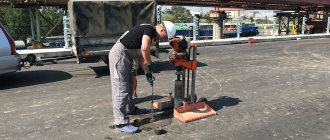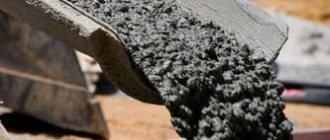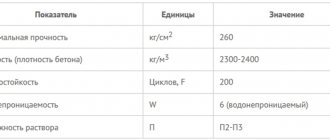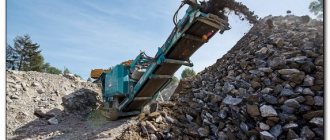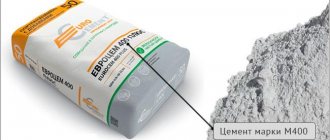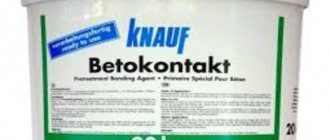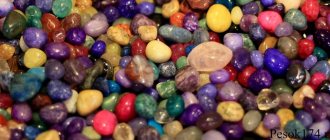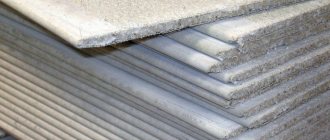State standards and composition
Crushed stone-mastic asphalt concrete, which is manufactured according to GOST 31015-2002, at first glance, could be classified as a group of classic road surfaces created on the basis of oil and bitumen binders. However, it is not. This mixture stands out among its competitors due to its structural features and component composition.
The basis of the material is formed by a rigid frame of crushed stone, which explains the high resistance to plastic deformation. Inside there is a large volume of bitumen binder, which occupies the free space between the aggregates. This reduces residual porosity, which is 1% or less. This made it possible to obtain a durable coating, which during operation exhibits high resistance to climatic and intense transport influences.
Main area of use
Highways (GOST 31015-2002) are usually constructed using asphalt concrete. One of the main areas of use of this material is also the construction of top layers:
- road surfaces;
- city streets;
- airfields;
- areas.
The composition can also be used for major repairs of top layers of coatings. Asphalt concrete is also used to create durable and high-quality areas and platforms.
Basic properties
Crushed stone-mastic asphalt concrete contains the following ingredients:
- crushed stone;
- stabilizing additive;
- bitumen;
- mineral powder.
The 1st is contained in a volume of 70 to 80%. As for bitumen, its amount in relation to the total mass can reach a limit of 7.5%. If we compare with conventional asphalt concrete mixtures, the one described is characterized by a high volume of petroleum bitumen and crushed stone.
To protect against delamination and maintain a uniform structure, the asphalt concrete mixture is bound with stabilizing additives in the form of fibers. This is especially true when carrying out road work. Depending on what fraction of aggregate is used in production, asphalt concrete can be systematized by composition.
If you have material marked ShMA 10, this indicates that the grain size of the crushed stone should not be more than 10 mm. The most common brand is asphalt concrete marked ShchMA 15. Here the standardized aggregate grain size is 15 mm. Crushed stone-mastic asphalt concrete can be represented by the marking ShchMA 20. In this case, we are talking about a composition with a maximum grain size of up to 20 mm.
A mixture of the brands described above is recommended for use in the manufacture of top layers of road pavements up to 6 cm thick. Such compositions are used on highways, city streets of all categories in climatic zones 1 - 5.
Additional properties
ShchMA, the GOST of which was mentioned above, has high wear resistance, a long service life and a low noise level when driving vehicles. The coating remains stable under mechanical stress; in addition, it is characterized by an increased coefficient of tire adhesion to the road surface. Wear resistance does not depend on climatic operating conditions. The service life will be three times longer compared to similar coatings used for the same purposes.
Where is crushed stone-mastic asphalt concrete used?
ShchMA can be used for the installation of the following categories of coatings:
- Category IV roads - from ordinary city roads to heavily loaded expressways and federal highways.
- Airfield pavements (it is recommended to increase the compressive strength by 25%, as well as the coefficient of adhesion).
- Access roads and parking lots.
- Pedestrian areas (squares, sidewalks, etc.).
“Due to its high physical and mechanical characteristics, this type of asphalt has no restrictions on its scope of application”
At the same time, budget asphalt mixtures are most often used for asphalting sidewalks and other pedestrian areas - such areas do not require high performance, since the external impact is minimal.
Main characteristics
Crushed stone mastic asphalt concrete (SMA) is tested according to state standards 12801-98. They agree that there are certain parameters that need to be studied, among them the following should be highlighted:
- compressive strength;
- shear resistance;
- crack resistance.
The compressive strength of ShchMA 15 is 9 MPa, which is true at a temperature of 0 °C. Shear resistance is equivalent to 0.93. When considering ShchMA 15, you can also pay attention to crack resistance. For this brand it is 4.3 MPa.
The true density of this material is 2.56 t/m3. The normalized thickness of the top coating layer is 0.05 m. According to GOST, ShchMA has a mass of 0.128 t/m2. The cost of one square meter of coverage is approximately 265 rubles.
Method for determining the resistance of a mixture to delamination based on the binder’s sagging index
The essence of the method is to assess the ability of a hot crushed stone-mastic asphalt concrete mixture to retain the binder contained in it.
B.1 Controls and auxiliary equipment
Laboratory scales of the 4th accuracy class according to GOST 24104.
Heat-resistant chemical glasses according to GOST 23932 with a capacity of 1000 cm3 and a diameter of 10 cm.
Cover glasses.
Chemical mercury glass thermometer with a measurement range from 100 °C to 200 °C with a scale division of no more than 1 °C.
Drying cabinet.
B.2 Test preparation procedure
The prepared crushed stone-mastic asphalt concrete mixture is heated to the maximum temperature in accordance with Table 3 and mixed thoroughly. The drying cabinet is also heated to the specified temperature, which is maintained during the test period with a permissible error of ±2 °C.
The empty glass is weighed, placed in a drying cabinet and kept at the temperature indicated in Table 3 for at least 10 minutes. Then the glass is placed on a scale and 0.9-1.2 kg of the mixture is quickly placed in it, weighed and covered with a cover glass.
B.3 Test procedure
The glass with the mixture is placed in a drying cabinet, where it is kept at the maximum temperature indicated in Table 3 for (60±1) minutes. Then the glass is removed, the cover glass is removed from it and the mixture is removed by turning the glass over, without shaking upside down, for (10 ± 1) s. After this, the glass is placed on the bottom again, cooled for 10 minutes and weighed along with the remains of the binder and the mixture adhering to its inner surface.
B.4 Processing of test results
Swelling of binder B,% by weight, is determined by the formula
B - too,
~ Si
(IN 1)
where g,, g2, g3 are the mass of the glass, respectively, empty, with a mixture and
after its removal, Mr.
The arithmetic mean value of two parallel determinations rounded to the second decimal place is taken as the test result. The discrepancy between the results of parallel tests should not exceed 0.05% in absolute value. In case of large discrepancies, the runoff of the binder is determined again and the data of four determinations are taken to calculate the arithmetic mean.
What are they made from?
Asphalt concrete technology provides certain requirements for the materials used, among which the following should be highlighted:
- crushed stone;
- bitumens;
- mineral powder;
- stabilizing component mixture.
As for crushed stone, its grain composition should consist of hard rocks. It is acceptable to use crushed material from metallurgical slag. The mark must be 1000 or higher. The grain shape should be cuboid. By total mass, the volume of lamellar and needle-shaped grains should not exceed 15%.
The frost resistance of crushed stone must be F50 or higher. In terms of abrasion, the value should correspond to grade I-1. If you are wondering what asphalt is made from, you should know that the base also contains bitumen. Petroleum bitumens are recommended that comply with GOST 22245–90. Polymer-bitumen binders can also be used. In the latter case, the requirements for bitumen runoff indicators must be met.
The composition may not contain fibrous stabilizing additives. All bitumen used must have sufficient adhesion to crushed stone. Otherwise, it is necessary to introduce a cationic type adhesive additive. If you want to know what asphalt is made from, then you should know that it also contains sand. It must be taken from hard rock crushing screenings. The sand grade must be 1000 or higher. The material must comply with GOST 8736–93. The volume of clay particles in it should not be more than 0.5%.
Mineral powder included
Road construction work is carried out using asphalt concrete, which contains mineral powder. Its characteristics are regulated by GOST 16557-78. It is made by crushing calcareous rocks or dolomite rocks. It is acceptable to use mineral powder from screenings of volcanic rocks. The particle fraction should not be more than 0.16 mm. If the composition contains a large amount of bitumen binder, this must necessarily entail the presence of a stabilizing additive. Without this component, it is impossible to obtain a mixture with the physical and mechanical properties that are prescribed by the standards.
List of normative documents, references to which are used in this standard
GOST 3344—83 Crushed stone and slag sand for road construction. Specifications
GOST 8267-93 Crushed stone and gravel from dense rocks for construction work. Specifications
GOST 8269.0—97 Crushed stone and gravel from dense rocks and industrial waste for construction work. Methods of physical and mechanical tests
GOST 8735—88 Sand for construction work. Test methods
GOST 8736-93 Sand for construction work. Specifications
GOST 11501-78 Petroleum bitumens. Method for determining needle penetration depth
GOST 11505-75 Petroleum bitumens. Method for determining elongation
GOST 11506-73 Petroleum bitumens. Method for determining the softening temperature by ring and ball
GOST 11507—78 Petroleum bitumens. Fraas brittleness temperature method
GOST 12784—78 Mineral powder for asphalt concrete mixtures. Test methods
GOST 12801-98 Materials based on organic binders for road and airfield construction. Test methods
GOST 16557—78 Mineral powder for asphalt concrete mixtures. Specifications
GOST 22245-90 Viscous petroleum road bitumen. Specifications
GOST 23932-90 Laboratory glassware and equipment. General technical conditions
GOST 24104—2001 Laboratory scales. General technical requirements
GOST 30108-94 Construction materials and products. Determination of specific effective activity of natural radionuclides
Stabilizing component mixture
According to GOST, roads must be laid using asphalt concrete, which contains a stabilizing component. Its properties and appearance are of great importance for improving the quality of the final material, its transportation, preparation and installation. Additives are structuring fibrous. They allow you to maintain uniformity and help retain hot bitumen on the surface of the crushed stone. This makes it possible to eliminate the delamination of the solution at high temperatures that are characteristic of the installation process.
The properties and characteristics of crushed stone-mastic asphalt concrete include the presence of stabilizing mixtures, namely:
- crumb rubber;
- polymer fibers;
- thermoplastic polymers;
- acrylic threads;
- asbestos fibers;
- mineral components;
- products based on silicic acid;
- cellulose fibers.
Due to the fact that the production cost is quite low, and cellulose and fiber are used in the form of fibers, as well as special granules based on them, the material holds bitumen on the surface of the coating for a long time and prevents delamination of the composition.
Delivery
We offer fast production and delivery of crushed stone-mastic mixtures in Moscow and the Moscow region. We can handle urgent orders within 24 hours. The minimum volume is 1m3.
We deliver the finished mixture using our own equipment - this way we are sure that the delivery conditions are strictly observed and the material will retain its properties. We issue a weight control coupon and provide a quality certificate - this guarantees the exact weight and compliance of the products with GOST.
Call us or leave a request on the website. The manager will call you back, tell you about the products, agree on delivery dates and place your order.
Characteristics in accordance with state standards
Hot mixtures must be resistant to delamination, including during storage and transportation. Such resistance to peeling is ensured by stabilizing additives, and this quality must be assessed according to GOST 31015.
The runoff rate should not exceed 0.3% by weight. When selecting the composition of the mixture, it is recommended that the flow rate of the binder be equal to the limit of 0.1 to 0.2% by weight. As for the color of asphalt, the mixture must have a uniform shiny black color, it must be characterized by uniformity, which is assessed according to GOST 12801. The variation in the indicator should not be more than 0.18% at a temperature of 50 ˚C.
Specifications
Official publication
INTERSTATE SCIENTIFIC AND TECHNICAL COMMISSION FOR STANDARDIZATION, TECHNICAL REGULATION AND CERTIFICATION IN CONSTRUCTION (INTKS)
Moscow
Preface
1 DEVELOPED BY FSUE Soyuzdornii, Transstroy Corporation and the Department of Technical Standardization, Standardization and Certification in Construction and Housing and Communal Services of the Gosstroy of Russia
INTRODUCED by the State Construction Committee of Russia
2 ADOPTED by the Interstate Scientific and Technical Commission for Standardization, Technical Regulation and Certification in Construction (MNTKS) on October 17, 2002.
Voted for acceptance
State name
Name of the state construction management body
Azerbaijan Republic Republic of Armenia
Republic of Kazakhstan Kyrgyz Republic
The Republic of Moldova
Russian Federation Republic of Tajikistan Republic of Uzbekistan
State Construction Committee of the Azerbaijan Republic
Ministry of Urban Development of the Republic of Armenia
Kazconstruction Committee of the Republic of Kazakhstan
State Commission for Architecture and Construction under the Government of the Kyrgyz Republic
Ministry of Ecology, Construction and Territorial Development of the Republic of Moldova
Gosstroy of Russia
Komarchstroy of the Republic of Tajikistan State Committee on Architecture and Construction of the Republic of Uzbekistan
3 INTRODUCED FOR THE FIRST TIME
4 This standard takes into account the main provisions of international ISO standards [1,2], European standard RG EN 13108-6 [3], Finnish asphalt standards 2000 |4] and German technical guidelines ZTV Asphalt-StB 02 [5]
5 ENTERED INTO EFFECT on May 1, 2003 as a state standard of the Russian Federation by Decree of the State Construction Committee of Russia dated April 5, 2003 No. 33
This standard cannot be fully or partially reproduced, replicated and distributed as an official publication on the territory of the Russian Federation without permission from the Gosstroy of Russia
ISBN 5-88111-041-2 © Gosstroy of Russia, State Unitary Enterprise TsPP, 2003
11
Content
1 Scope……………………………………………………………….1
2 Normative references………………………………………………………………………………1
3 Definitions…………………………………………………………………………………..1
4 Main parameters and types……………………………………………………………..2
5 Technical requirements……………………………………………………….2
6 Acceptance rules………………………………………………………………………………6
7 Control methods………………………………………………………………………………8
8 Transportation…………………………………………………………………………………9
9 Directions for use……………………………………………………….9
10 Manufacturer's warranty……………………………………………………….9
Appendix A List of regulatory documents, links
for which are used in this standard………………………………………………………………..10
Appendix B Recommendations for the design of crushed stone mastic asphalt concrete………………………………11
Appendix B Method for determining the resistance of a mixture to
delamination according to the binder flow rate………………………………………………………………………………16
Appendix D Determination of humidity and heat resistance
fibers………………………………………………………18
Bibliography………………………………………………………………………………….20
to GOST 31015—2002 Asphalt concrete mixtures and crushed stone-mastic asphalt concrete. Specifications
| In which place | Printed | Must be |
| Clause 5.10.3 footnote | Mineral powder must match requirements of GOST 16557. | Mineral powder must match requirements of GOST 16557*. * GOST R 52129-2003 is in force on the territory of the Russian Federation. |
| Clause 7.4 | mineral powder according to GOST 12784. | mineral powder according to GOST 12784*. |
| footnote | * GOST R 52129-2003 is in force on the territory of the Russian Federation. | |
| Appendix A | GOST 12784-78 Mineral powder for asphalt concrete mixtures. Test methods. GOST 16557-78 Mineral powder for asphalt concrete mixtures. Technical conditions. | GOST 12784-78* Mineral powder for asphalt concrete mixtures. Test methods. GOST J6557-78* Mineral powder for asphalt concrete mixtures. Technical conditions. |
| footnote | * GOST R 52129-2003 is in force on the territory of the Russian Federation. Mineral powder for asphalt concrete and organo-mineral mixtures. Technical conditions. |
(ICC No. 8 of 2004)
INTERSTATE STANDARD
ASPHALT CONCRETE AND ASPHALT CONCRETE MIXTURES, CRUSHED STONE-MASTIC
Specifications
BITUMINOUS STONE MASTIC MIXTURES AND STONE MASTIC ASPHALT
Specifications
Date of introduction 2003-05-01
Coating technology
Mixtures of asphalt concrete and crushed stone-mastic asphalt concrete must be laid in dry weather. If work is carried out in the spring, then the ambient temperature should not be lower than + 5 ˚С. In autumn this figure is + 10 ˚С. The base must be dry and have a positive temperature.
The work includes some technological operations. At the first stage, preparatory work is carried out. Next, the asphalt concrete mixture is received and unloaded into the asphalt paver hopper, if that is what is used. Another mechanism may be used. The mixture is then laid with an asphalt paver and compacted with a roller.
If work is carried out using hot asphalt concrete, it is delivered to the work site by dump trucks with clean bodies that have a heating system. The mixture is covered with a waterproof tent. Laying must be carried out at a continuous pace and must be coordinated with plant productivity. The pace of work is regulated by relevant documentation and is prescribed in the work project.
To lay the mixture, you should use asphalt pavers with an automatic system for ensuring cross slope and evenness of the surface. To compact the coatings, road rollers are used, the weight of which reaches 18 tons. When installing the coatings, preparatory work is carried out. They include the installation of fences and road signs.
Before laying a layer of hot asphalt concrete, you need to ensure the evenness and quality of the underlying surface. The base should be cleaned of dust and dirt, treated with an organic binder based on bitumen emulsion. For this purpose, you can use liquid road bitumen.
Asphalt concrete is laid without cooled longitudinal joints to the width of the roadway. The number of simultaneously working pavers must be assigned taking into account the width of the compacting working bodies. The pitch between asphalt pavers working simultaneously in the same neighborhood should not be higher than 30 m. In order to obtain an even pavement surface, it is necessary to ensure constant speed and continuity of paving. The first mentioned depends on the uniformity of delivery of the mixture to the paver and usually varies from 2 to 4 m per minute.
The mixture should protrude from the car body as evenly as possible during installation. In order to achieve a layer of constant thickness and the desired evenness, uniform pressure of the material on the slab should be ensured. At the beginning of the shift, when laying is resumed after a break, the transverse joint should be warmed up. The smoothing slab is installed on the previously laid coating. The auger chamber is then gradually filled with the mixture.
Determination of moisture content and heat resistance of fibers
The essence of the method is to determine the loss of fiber mass at a given temperature and test time.
G L Controls and auxiliary equipment
Metal rectangular baking trays measuring 20x10x2 cm.
Drying cabinet with a thermostat that maintains the temperature with an accuracy of ±3 °C.
Glass mercury thermometer with scale division of 1 °C.
Exicatrr according to GOST 23932 with anhydrous calcium chloride.
Laboratory scales according to GOST 24104, 4th accuracy class.
D.2 Preparation for testing
Before testing, a fiber sample is placed on a sheet of paper and loosened by hand, eliminating lumps if there are any in the sample.
Thoroughly washed metal trays are placed for at least 30 minutes in a drying oven at a temperature of (105 ± 3) ° C, then cooled in a desiccator to room temperature.
G.3 Carrying out the test
When testing fibers, weighing is carried out with a permissible weighing error of 0.1% by weight. Mass is determined in grams accurate to the second decimal place.
The test is carried out in two baking trays. Each baking sheet prepared according to G.2 is weighed. From the fiber sample prepared according to G.2, take two samples of (5±1) g each and pour them into baking trays, filling them evenly without compaction. The trays containing the fiber are weighed and placed in an oven at a temperature of (105 ± 3) °C to dry the fibers.
After 30 minutes, the trays containing the fibers are removed from the oven, placed in a desiccator, cooled to room temperature, weighed and placed back in the desiccator.
Trays with fibers dried in an oven at a temperature of (105 ± 3) °C and cooled in a desiccator to room temperature are placed in an oven preheated to (220 ± 3) °C.
The temperature is controlled with a thermometer, the mercury reservoir of which is located at the height of the baking trays.
Since when cold baking sheets are installed, the temperature of the drying cabinet decreases, the time the baking sheets with fibers remain in the drying cabinet is counted from the moment the set temperature is reached.
The baking sheets with fibers are kept in a drying cabinet at a temperature of (220±3) °C for 5 minutes.
After the holding time has elapsed, the trays with fibers are removed from the drying oven, placed in a desiccator, cooled to room temperature and weighed.
D.4 Processing of results
Fiber moisture content W,%, is determined by the formula
W = l2-.j3.ioo,gp
g%-g) to }
where g is the weight of the baking sheet, g;
g2 is the weight of the baking sheet with fibers, g;
g3 is the weight of the baking sheet with fibers after drying in an oven, g.
Thermal resistance of fibers Тв,%, is determined by the formula
T =il_ilioo,
S3-S1
(D.2)
where g4 is the weight of the baking sheet with fibers after keeping in an oven at a temperature of (220±3) °C, g.
The discrepancy between the results of two parallel determinations should not be more than 0.5% (in absolute value). The arithmetic mean of the results of two parallel determinations, rounded to the first decimal place, is taken as the result.

